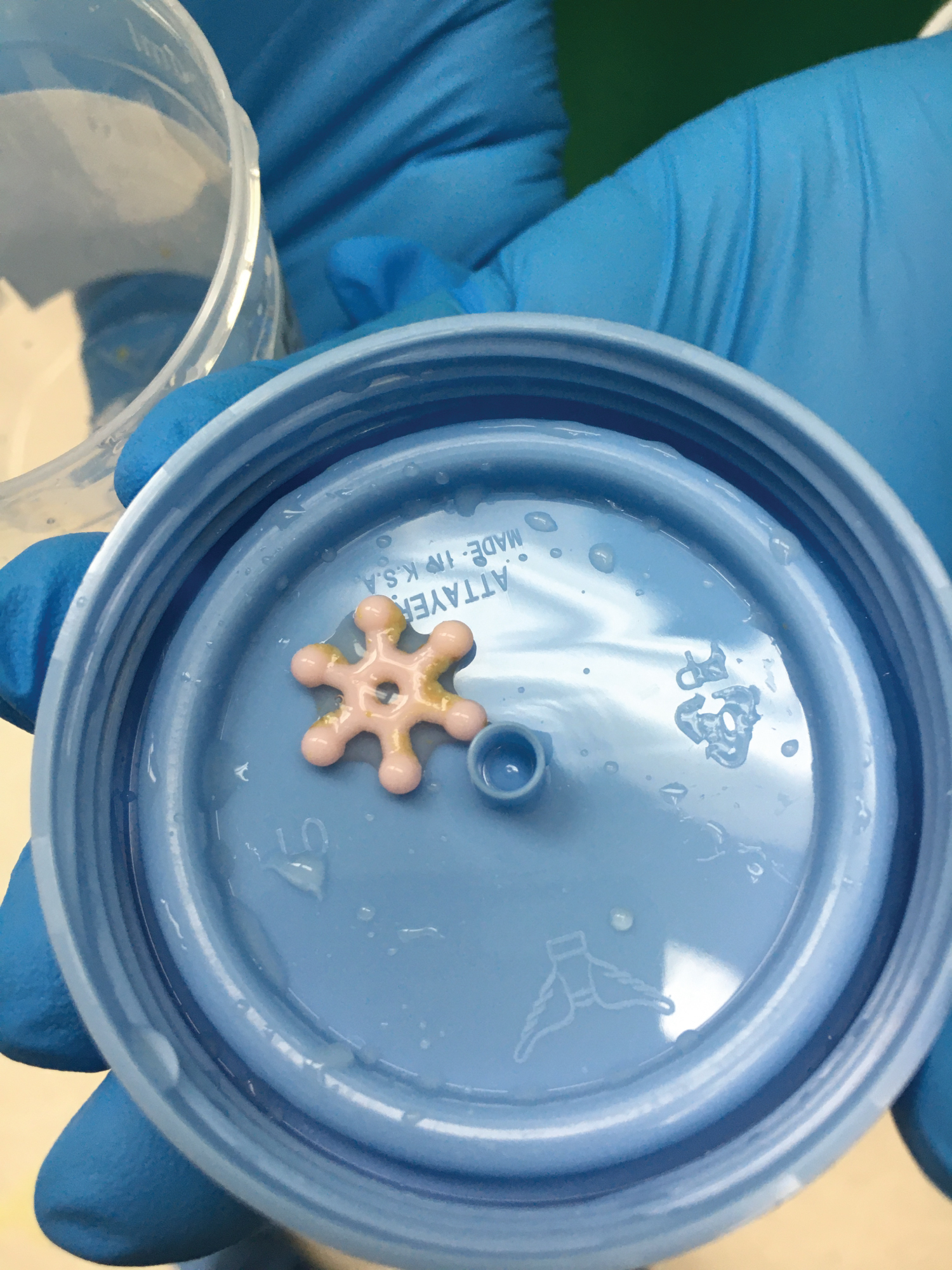Otolaryngologists frequently encounter nasal foreign bodies, particularly among children and mentally retarded patients. Upper aerodigestive tract may harbour foreign bodies such as sponges, grains, toy parts, paper and cotton. Majority of inhaled foreign bodies may pass unnoticed and others can be a source of serious morbidity with occasional mortality if not identified on time and properly treated. Foreign bodies may be classically organic or inorganic and their impaction into various parts of the aerodigestive tract may occur. Nasopharyngeal foreign bodies are rare in any age group and it is difficult even to suspect in the absence of radiopaque foreign body.
We are reporting an unusual case in which a radiolucent foreign body in a child's nasopharynx went unnoticed for 1year and was found incidentally during endoscopic adenoidectomy.
The clinical presentation of foreign bodies in the nasopharynx can vary among individuals.
Foreign body, Nasopharynx, Aerodigestive tract
Foreign bodies are common in day to day ENT practice. Foreign body in the aerodigestive tract may present as a life threatening situation and requires prompt diagnosis and intervention. Nasopharyngeal foreign bodies tend to produce minimal signs and symptoms and may often be missed thus challenging to diagnose [1,2]. Encountering aspirated foreign bodies having been lodged in the nasopharynx is a rare encounter. We present a case of an impacted foreign body in adenoide tissue which was accidentally discovered during endoscopic adenoidectomy.
A 4-year-old boy was admitted to undergo an elective endoscopic adenoidectomy showing adenoid tissue due to snoring. Upon throat examination, he had grade 2 tonsils according to the Brodsky scale. However, x-ray of the nasopharynx-lateral view showed narrowing of the nasopharyngeal air column, which confirms adenoid hypertrophy (Figure 1). He underwent a routine preoperative assessment in which all laboratory test results were normal and pre-operative anesthetist review approved the child to undergo the scheduled surgery. During adenoidectomy, adenoid tissue was palpated and then curetted using adenoid curette. While curetting the adenoid tissue (Figure 2), a plastic material being shown in oropharynx (Figure 3) and picked up. Intraoperatively, 0° nasal endoscopy, 2 mm in diameter was used to remove the remains of adenoid tissue using microdebrider and no any other foreign body was seen. The child was kept in our ward and observed for 8 hours before discharging him home as per the set hospital protocols post-surgery.
 Figure 1: X-ray adenoid view showing adenoid hypertrophy.
View Figure 1
Figure 1: X-ray adenoid view showing adenoid hypertrophy.
View Figure 1
 Figure 2: Adenoid tissue after removal.
View Figure 2
Figure 2: Adenoid tissue after removal.
View Figure 2
 Figure 3: Showing foreign body (Plastic material).
View Figure 3
Figure 3: Showing foreign body (Plastic material).
View Figure 3
Postoperatively, we asked the mother about the foreign body which was removed intraoperatively and she gave a history of foul smell and left sided nasal discharge since 1year, which was examined in other hospital and x-ray of the nasopharynx was done revealed no evidence of foreign body detected, so discharge was advised. The symptoms resolved after given nasal decongestants and antibiotic course for 7days.
Nasopharyngeal foreign bodies are rare when compared to other sites and this is due to the wider postnasal space [1]. Foreign bodies in the nasopharynx may be missed on clinical examination and may accidentally be discovered in a radiograph of the nasopharynx [2]. Long standing undetected nasopharyngeal foreign bodies have been reported to have caused acquired cleft palate [3]. The clinical presentation of aspirated nasopharyngeal foreign bodies may mimic other common pediatric conditions such as adenoid hypertrophy [4]. The most common patient complaints include bilateral purulent rhinorrhea and nasal obstruction [5,6]. Epistaxis, recurrent rhinosinusitis, halitosis, and otitis media with or without effusion may also occur in cases of prolonged nasopharyngeal lodgment [6,7]. Nasopharyngeal foreign body lodgment can occur in many scenarios, such as dislocation of a foreign body from the nasal cavity during extraction attempts, upward migration from the pharynx or esophagus after forceful pressure due to vomiting or coughing, traumatic penetration, or iatrogenic causes [5].
Nasopharyngeal foreign bodies are rare. It's important to palpate thoroughly the nasopharynx during adenoidectomy since a foreign body may lodge and contribute to snoring apart from adenoid tissue which is commonly sought by otorhinolaryngologists. Endoscopic adenoidectomy play an important role in extraction of unnoticed nasopharyngeal foreign body.
The study was approved by scientific committee and ethics committee of ORL department of Helwan university hospital but the committee reference number is not available. The informed written consent was obtained from the patient's mother.
Written informed consent was obtained from the patient's mother for publication of this case report and accompanying images.
Not applicable.
The authors declare that they have no competing interests.
No funding was obtained.
MN was the main surgeon and was responsible on data collection and writing the manuscript. The author read and approved the final manuscript.
Not applicable.